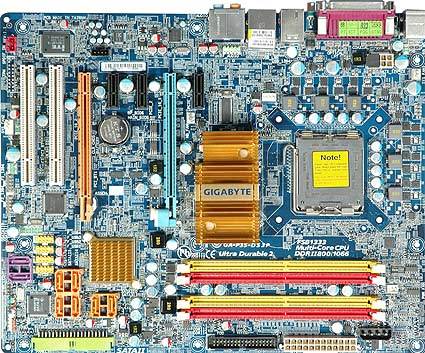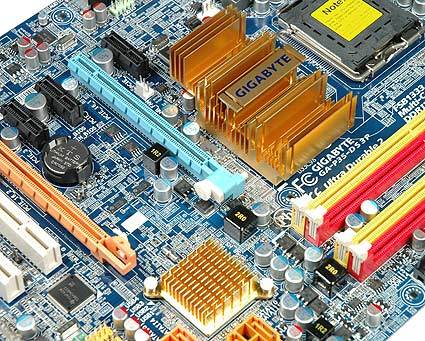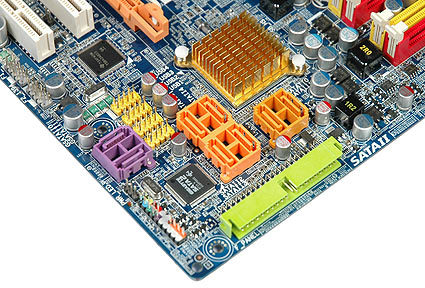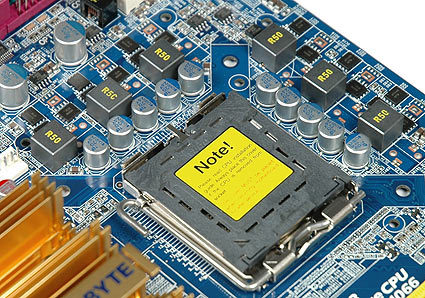$89 Pentium Dual Core that Runs at 3.2 GHz
Test Motherboard: Gigabyte P35-DS3P
It is possible to achieve good overclocking results with motherboards costing slightly above $100. However, we decided to go with a decent mainstream model, because spending roughly $150 will give you a powerful product that is only inferior to high-end models when it comes to providing large amounts of interfaces and sophisticated cooling options for hardcore overclocking. We believe it makes sense to purchase a decent motherboard, so it can support the 45 nm processor generation based on the Penryn core. Let's not forget that there might be another low-cost processor in the 45 nm future that could also be greatly overclockable.
Our choice was a P35-DS3P by Gigabyte, which we purchased for approximately $160; we plan to use it in a desktop PC after this project is finished. If you don't want to spend that much, you could have a look at the P35-DS3, which would have sufficed as well. Going up the portfolio, the DS3R is the first model to support eight SATA/300 ports with RAID. The DS3P also comes with Firewire and a secondary PCI Express x16 slot for dual graphics setups. (However, the second slot is only PCIe x4 only.) All DS3 motherboards come with a six-phase voltage regulator and comprehensive overclocking options. The DS4 has more sophisticated component cooling than the DS3 family.
While we played around with the Pentium Dual Core E2160 to find reasonable overclocking settings, we discovered a pretty interesting detail. If you do not change the CPU voltage when overclocking and set this item to "auto", the P35-DS3P will automatically increase the CPU voltage, which helped to run the processor at up 3 GHz without manual fine-tuning.
Get Tom's Hardware's best news and in-depth reviews, straight to your inbox.
Current page: Test Motherboard: Gigabyte P35-DS3P
Prev Page Chose Your Components With Care Next Page Processor: Pentium Dual Core E2160
Patrick Schmid was the editor-in-chief for Tom's Hardware from 2005 to 2006. He wrote numerous articles on a wide range of hardware topics, including storage, CPUs, and system builds.
-
ripwind Yep - It was this very article that caused me to buy mine, along with a G92 8800GTS. My E2160 has been running @ 3.2GHZ with the stock cooler for almost 3.5 years. I'm only now considering an upgrade.Reply
Both that processor and that video card have scaled so well over the years that I'm still able to run what I want at 1920x1080 with reasonable settings. -
presto84 I've just bought a second hand motherboard for university and it came with this CPU onboard. Remembered this article so had to look to check it was the same chip. The board has an Intel P945 chipset and supports up to 1333mhz according to the website so might be worth giving this a go.Reply -
Noodletoe One of my all-time favorite Toms articles - used it to OC my E2180 to 3.0ghz 4 years ago and it's still running strong as my guest computer. I was just looking to upgrade the CPU to a E-6550 I found for cheap, but after re-reading this article I think I'll just leave it alone :)Reply





